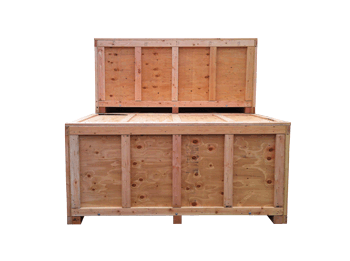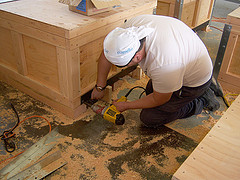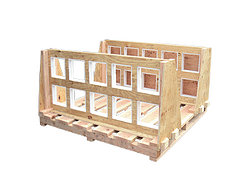 Wooden crates are one of the most versatile shipping and storage solutions for businesses. They are durable, easy to customize and in most cases, renewable, especially if they are made from wood. Although there are numerous benefits to using wooden crates, some professionals are still skeptical about what they bring to the table. This means you might hear some not so great advice for your next storage or shipping run.
Wooden crates are one of the most versatile shipping and storage solutions for businesses. They are durable, easy to customize and in most cases, renewable, especially if they are made from wood. Although there are numerous benefits to using wooden crates, some professionals are still skeptical about what they bring to the table. This means you might hear some not so great advice for your next storage or shipping run.
1. Building crates in-house is better than buying from a supplier.

The truth is, when it comes to buying vs. building crates in-house, most manufacturers would prefer to buy their wooden crates from a supplier.
If a manufacturer decides to build packaging in-house, they are ultimately taking time away from their core business activity (manufacturing), which could slow production and profits.
They'd also then have to:
- Pay wages for the time and labor involved in building the crates
- Pay for materials
- Pay administrative staff to help manage everything from sourcing and purchasing materials to controlling inventory
- Pay to have waste materials removed by an outside company
Choose a supplier and you will save time and money. Companies want your business, so they are willing to do some serious negotiating in order to land your account. It’s that simple! Follow our 16 Questions to Ask Before Outsourcing a Packaging Contractor guide.
2. Virtually all other types of materials are cheaper than wood.

Not true. In fact, wooden crates are an ideal choice for companies on a budget or businesses that simply want to save money. Believe it or not, the purchase price for wood box is actually lower than the cost for many other materials including plastic, thermo-formed, and fiberglass.
Wood is easy, inexpensive to acquire and wood boxes are easy to produce—even with the most unique customer measurements.
Additionally, wooden crates can be customized to your part in very low quantities. The alternate materials require larger production runs, on top of being more expensive and less recyclable. In fact, wood is so recyclable that there is an emerging market for recycled wood as a form of renewable fuel!
3. There’s no need to customize the base of a wood box —you’ve seen one base, you’ve seen them all.

Not really the case. Did you know that the most complex part of a box tends to be the base? In fact, base, lid and internal components are typically the design elements that vary greatly from box to box.
Depending on the customer’s needs, a variety of engineered bases may be employed including special skid configurations, plywood & dimensional lumber bases, steel reinforced bases, complex tie-down applications, custom saddle components, and many more.



